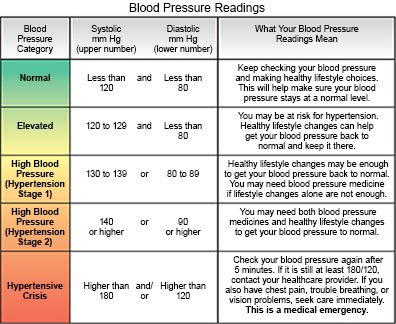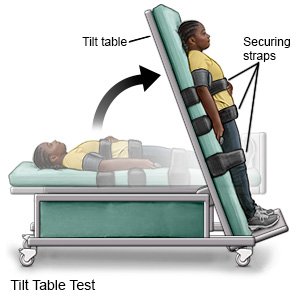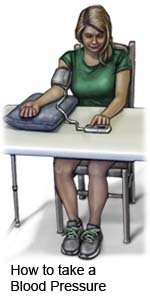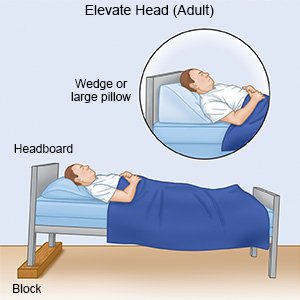Hypotension
Medically reviewed by Drugs.com. Last updated on Aug 4, 2025.
What is hypotension?
Hypotension is blood pressure (BP) that is lower than it should be. Hypotension may be mild, serious, or life-threatening.
 |
What are the most common types of hypotension?
- Acute is a sudden drop in your BP that may be life-threatening.
- Constitutional means your BP is lower than it should be most or all of the time. This is a chronic condition that occurs with no known medical cause.
- Orthostatic occurs when you stand up from a sitting or lying position. It is also called postural hypotension.
- Postprandial means your BP becomes too low after you eat a meal. Your BP may drop within 2 hours after you eat, and is more common when you eat meals high in carbohydrates.
What causes or increases my risk for hypotension?
- Anemia, blood loss, or hemodialysis
- A nervous system, heart, or adrenal disorder
- Dehydration from not drinking enough liquids, vomiting, diarrhea, or severe burns
- Some medicines, such as those used to treat high blood pressure, heart conditions, pain, depression, or cancer
- Increasing age, low body weight, or pregnancy
- Drug or alcohol use
- Being bedridden for a long period of time
- A medical condition such as diabetes or sepsis (a blood infection)
What are the signs and symptoms of hypotension?
- Feeling anxious, nauseated, tired, or weak
- Lightheadedness, dizziness, or fainting
- Increased sweating, palpitations (fast, forceful heartbeats), tremors, or a seizure
- Headache or pain in your neck, shoulders, chest, lower back, buttocks, or legs
- Blurred vision or changes in vision
- Confusion, decreased memory, or inability to pay attention
How is hypotension diagnosed?
Your healthcare provider will ask about your symptoms, health conditions, and medicines. Tell your provider how often you have symptoms, and if they change during the day. Tell your provider if you recently have had diarrhea, vomiting, or blood loss. Your provider will examine you, listen to your heart, and may check your eyes. Your body movements and sensations (ability to feel something that touches you) may also be checked. You may also need the following:
- Blood pressure testing may be done while you lie down, sit, and stand. You may need to wear a BP monitor to record your BP for up to 24 hours.
- Tilt table testing is done while you are secured on a table that changes your position. Your BP is checked when the table moves you into each position.

Related medications
Which tests may help find the cause of my hypotension?
Many times, hypotension is a symptom of another condition. You may need any of the following tests to find the cause of your hypotension:
- A blood or urine sample may be checked for anemia or other conditions causing your hypotension.
- An EKG records the electrical activity of your heart. It is used to check for damage or other heart problems.
- Autonomic nervous system tests may show changes in how fast your heart beats when you take deep breaths. Your healthcare provider may also check for changes in your BP while you put your hand in ice cold water.
- A 24 hour urine test is used to measure and record how much you urinate. At the end of 24 hours, the urine will be sent to a lab for tests.
- An echocardiogram is a type of ultrasound, also called an echo. An ultrasound uses sound waves to show pictures of your heart on a monitor. An ultrasound may be done to show how your heart moves when it beats.
How is hypotension treated?
Your healthcare provider will work with you to find the cause of your hypotension and help treat your symptoms. You may need the following:
- Compression stockings or an abdominal binder may help blood return to your heart and decrease your hypotension.
- IV fluids may be used to increase your BP if you are dehydrated or have blood loss or sepsis.
- Medicines may be used to increase your BP or body fluids, prevent salt loss, or make you urinate less often. Antibiotics may be needed to treat a bacterial infection.
Treatment options
The following list of medications are related to or used in the treatment of this condition.
How can I manage hypotension?
- Check your blood pressure as directed. Record the results and bring them with you to follow-up visits. Ask when and how often to check your BP. You may be given a BP monitor to wear for up to 24 hours. This will record your blood pressure during your normal daily activities. The monitor will take your BP every 15 to 30 minutes. Try to keep still while your BP is taken. Avoid heavy activity, such as exercise, while you are wearing the monitor.

- Change your position slowly. When you get out of bed, sit up first, then slowly move your legs to the side of the bed. If you are not having any symptoms, slowly stand up. If you have symptoms, sit down right away.
- Avoid straining. Activities and movements that cause you to strain can cause a drop in your BP. Activities to avoid include lifting, coughing, and other movements that increase the feeling of pressure in your chest.
- Avoid the heat. This can cause a decrease in your BP. Stay inside during very hot days, or limit the amount of time you are outside. Do not take hot baths.
- Exercise and do physical counter maneuvers. Ask your healthcare provider about the best exercise plan for you. Physical counter maneuvers may help to increase your BP and increase blood flow to your heart. They include crossing your legs, squatting, and bending at the waist. You can also rise up on your toes while you are standing, and tighten your thigh muscles.
- Drink liquids as directed. Ask your provider how much liquid to drink each day and which liquids are best for you. Drink 500 milliliters (½ liter) of liquid quickly in the morning or before meals to help increase your BP. Your provider may tell you to drink 2 cups of coffee with, or after, breakfast and lunch. The caffeine in the coffee can help prevent a drop in your BP. Your provider may also give you caffeine pills.
- Change how you eat meals. If your BP drops after you eat large meals, try to eat smaller meals more often. Eat foods low in carbohydrates and cholesterol to help prevent BP drops after you eat. Ask if you need to increase the amount of sodium (salt) you eat each day.
- Raise the head of your bed. Raise the head of your bed 4 to 8 inches. This can help prevent morning BP drops and decrease the need to urinate during the night.

- Do not drink alcohol. Alcohol can make your symptoms worse. Ask for information if you need help quitting.
Call your local emergency number (911 in the US) if:
- You become confused or cannot speak.
- You have a seizure.
- You have chest pain or trouble breathing.
When should I seek immediate care?
- You urinate very little or not at all.
- You have changes in vision or cannot see.
When should I call my doctor?
- You vomit several times or have diarrhea, and you cannot drink liquid.
- You have a fever.
- You have new or increased symptoms, such as dizziness, weakness, or fainting.
- Your legs, ankles, and feet are swollen, or you gain weight for no known reason.
- You have questions or concerns about your condition or care.
Care Agreement
You have the right to help plan your care. Learn about your health condition and how it may be treated. Discuss treatment options with your healthcare providers to decide what care you want to receive. You always have the right to refuse treatment. The above information is an educational aid only. It is not intended as medical advice for individual conditions or treatments. Talk to your doctor, nurse or pharmacist before following any medical regimen to see if it is safe and effective for you.© Copyright Merative 2025 Information is for End User's use only and may not be sold, redistributed or otherwise used for commercial purposes.
Learn more about Hypotension
Treatment options
Care guides
Further information
Always consult your healthcare provider to ensure the information displayed on this page applies to your personal circumstances.
